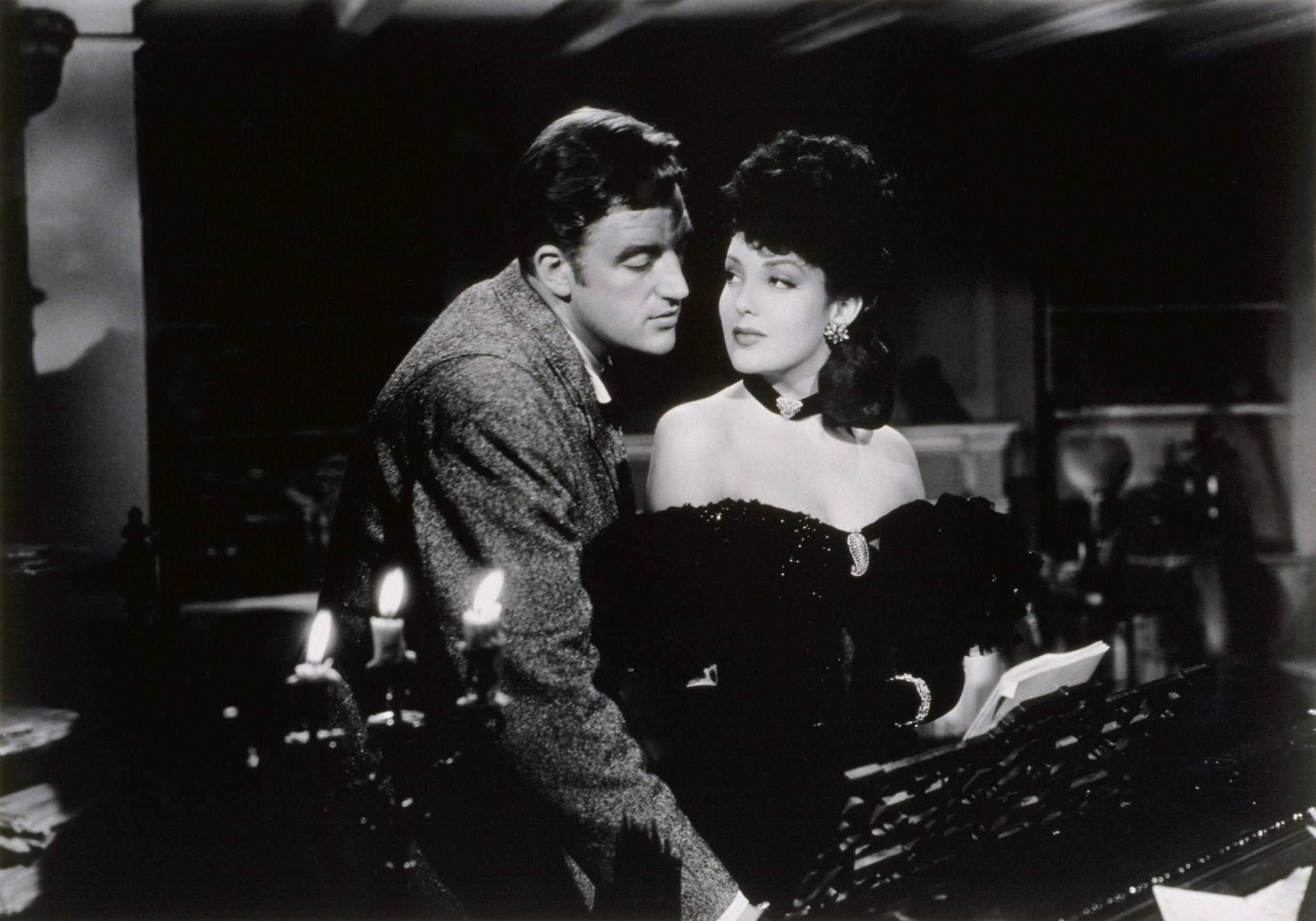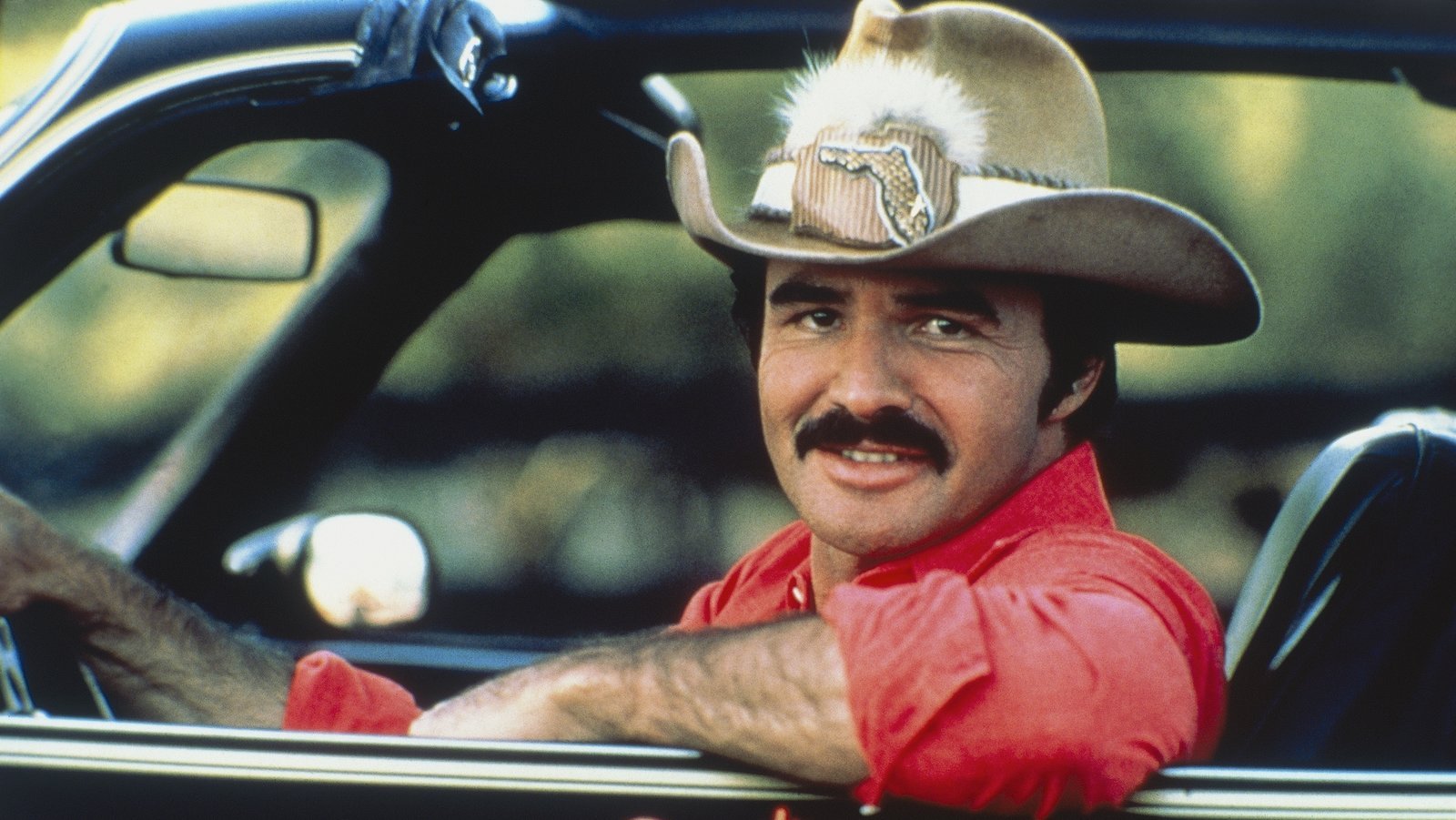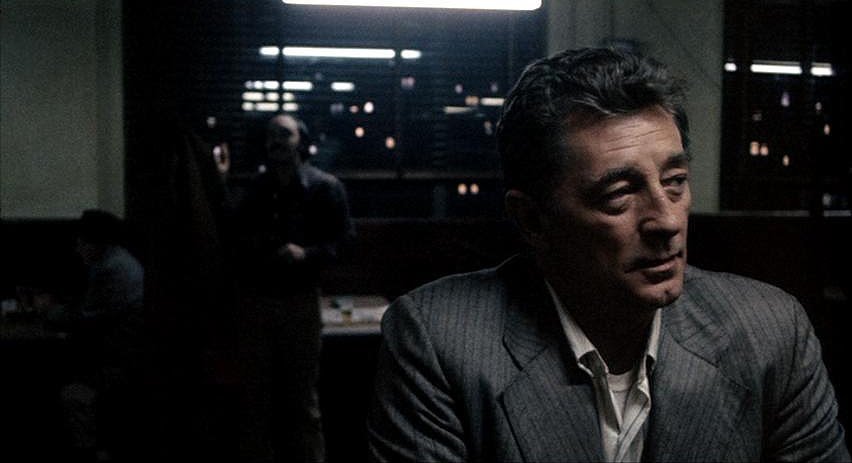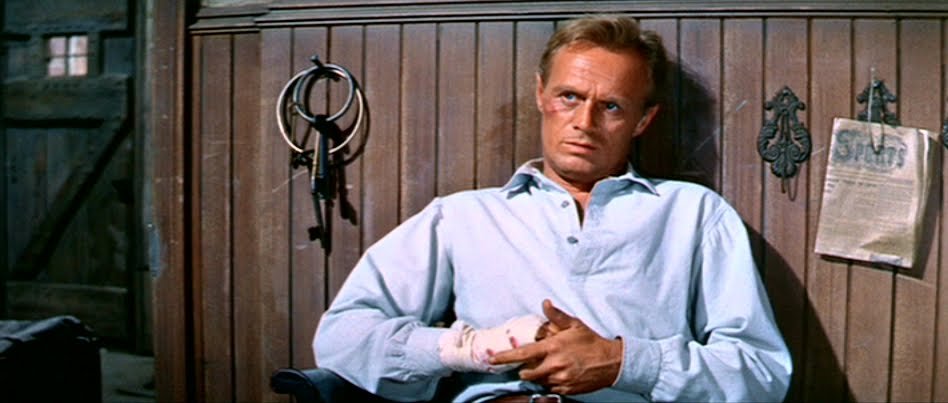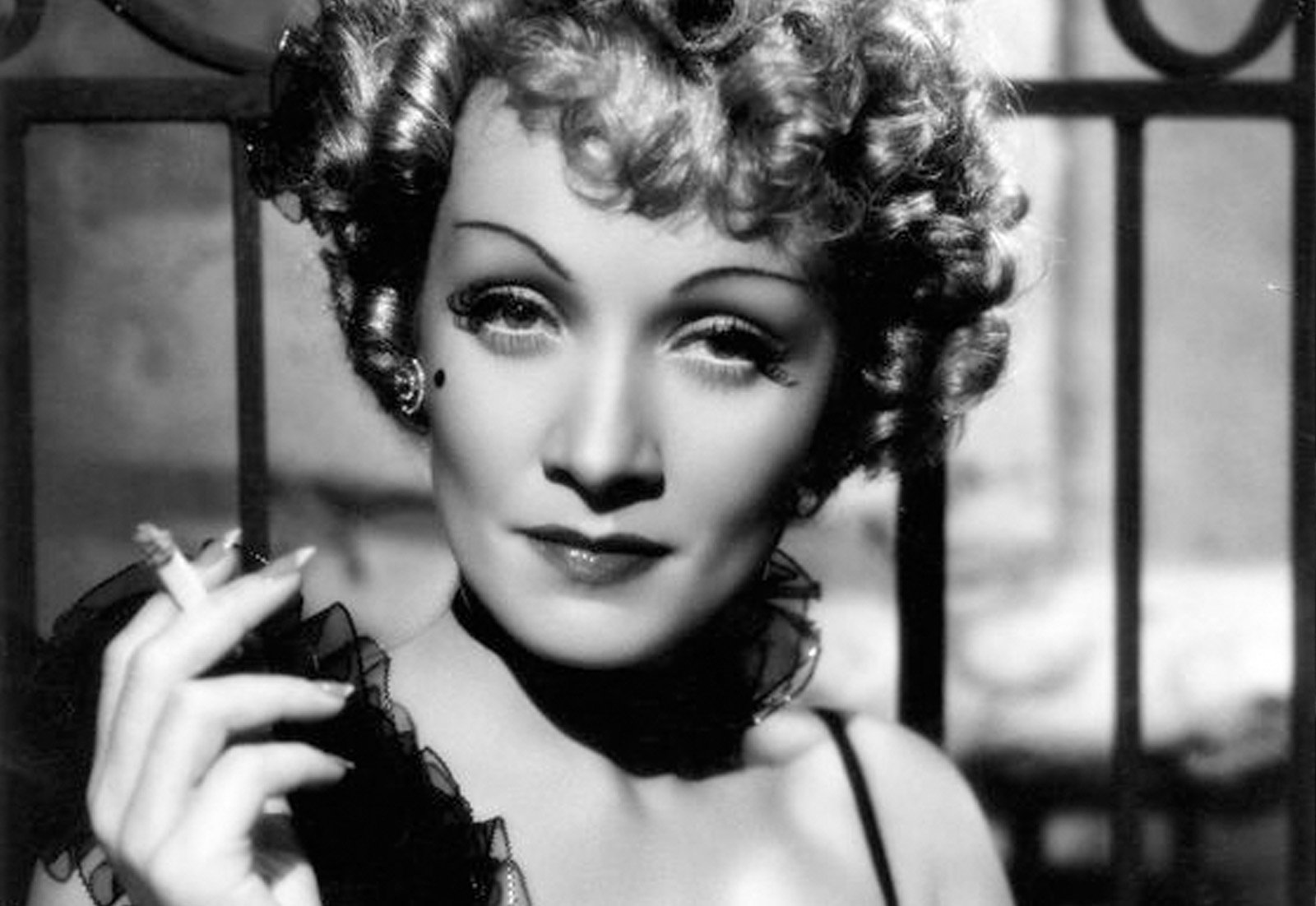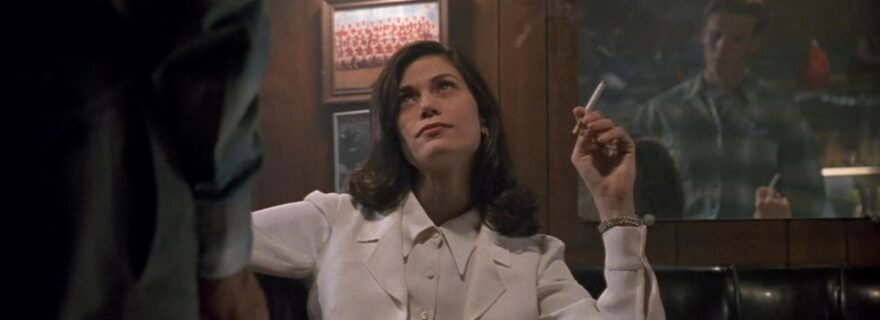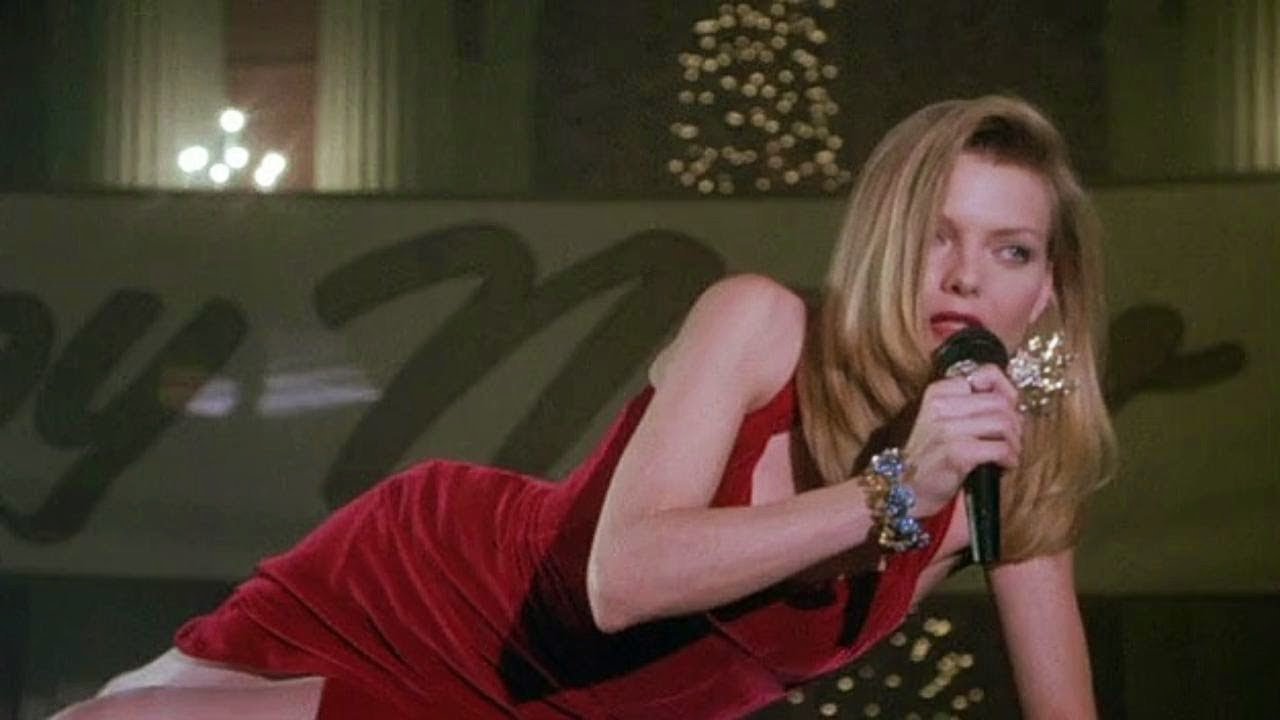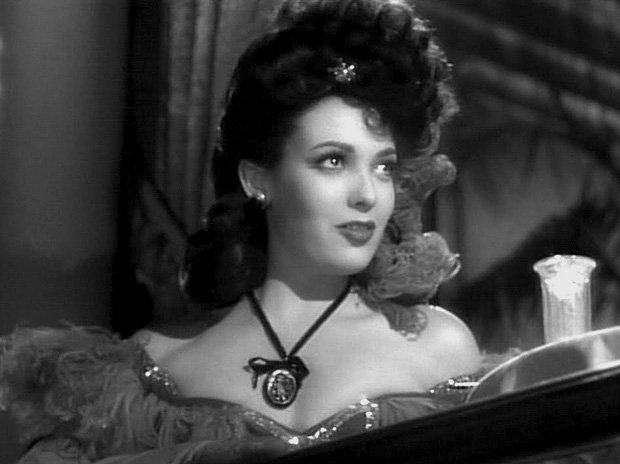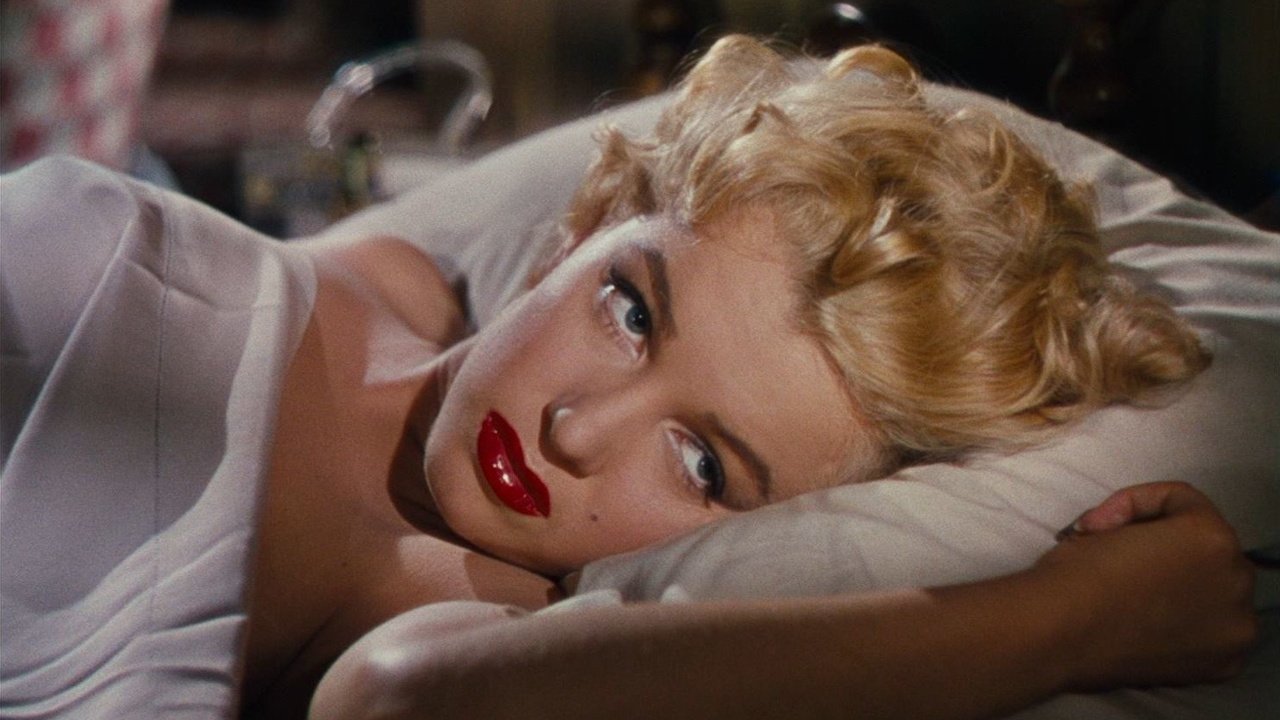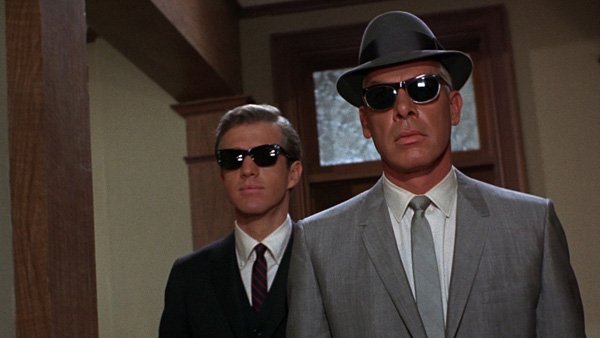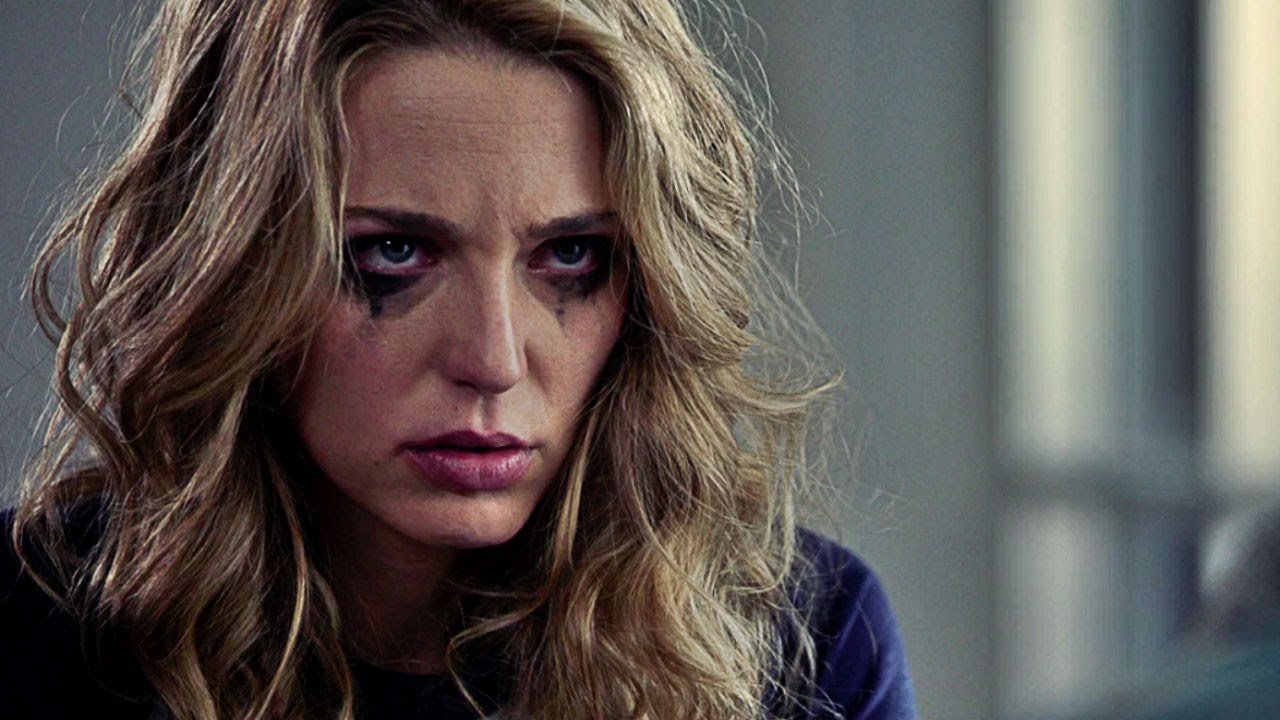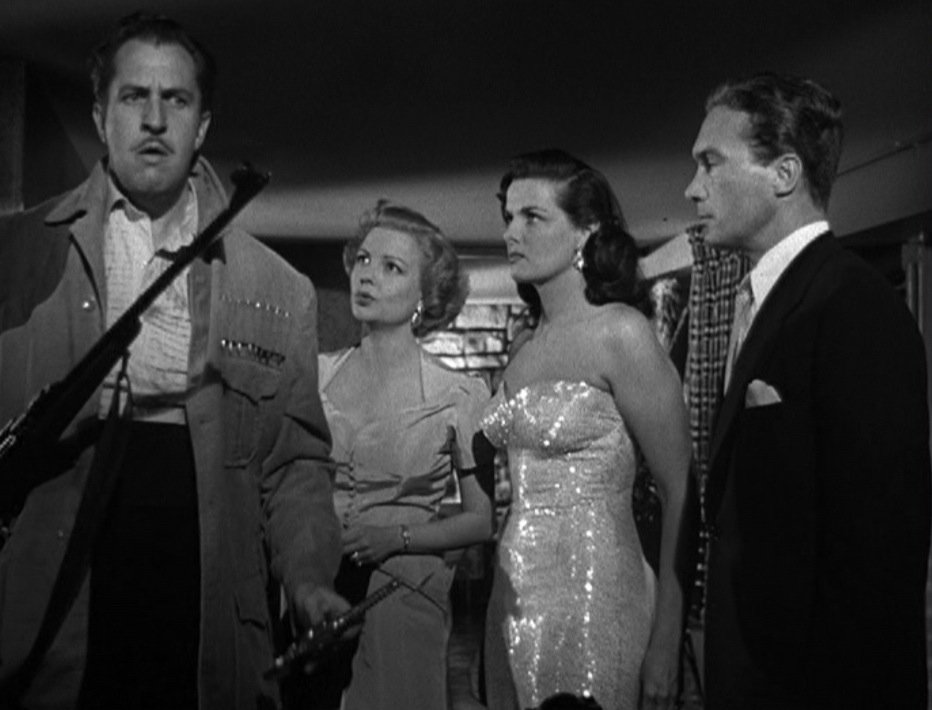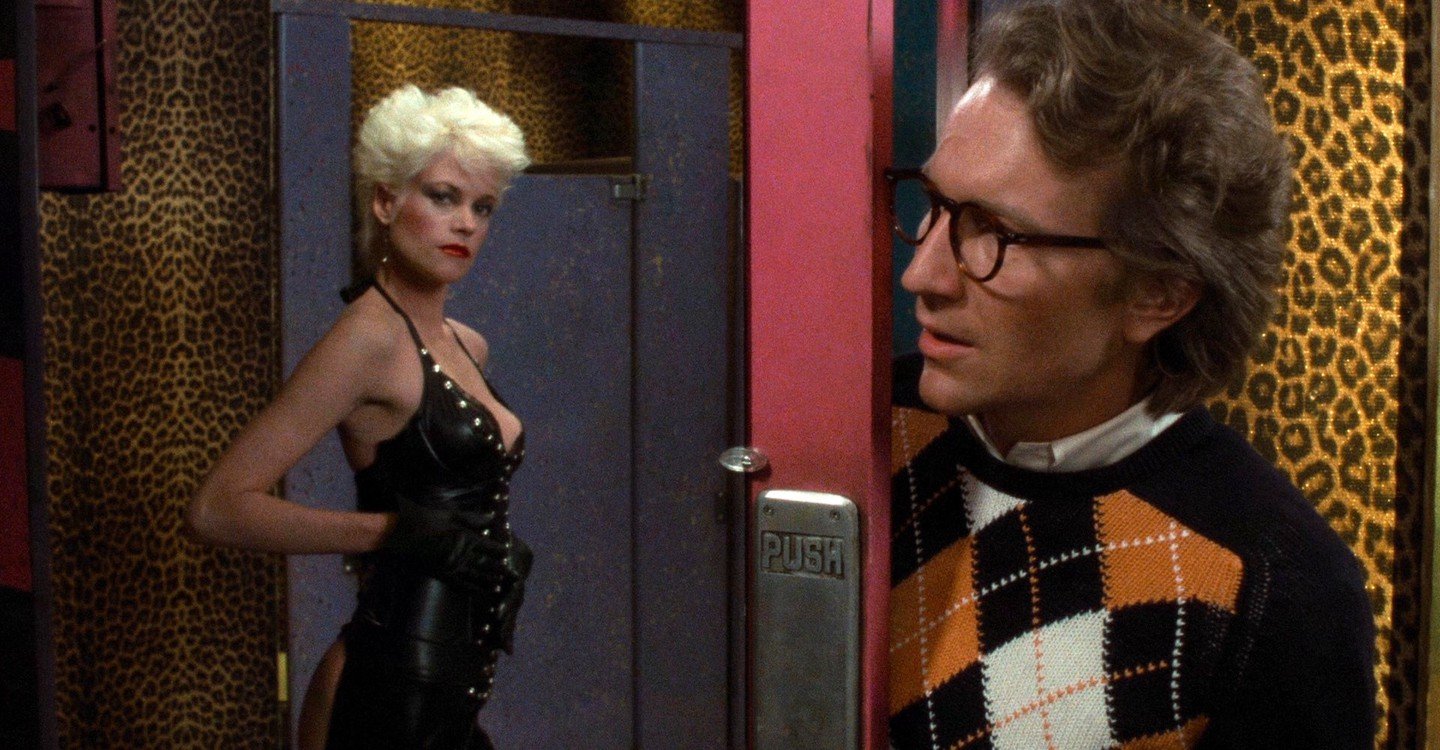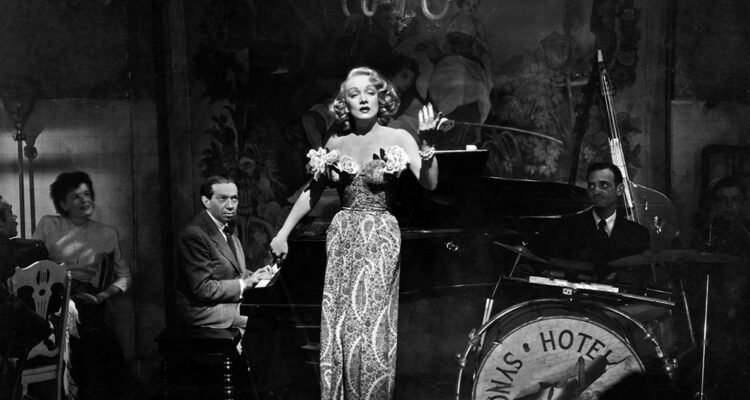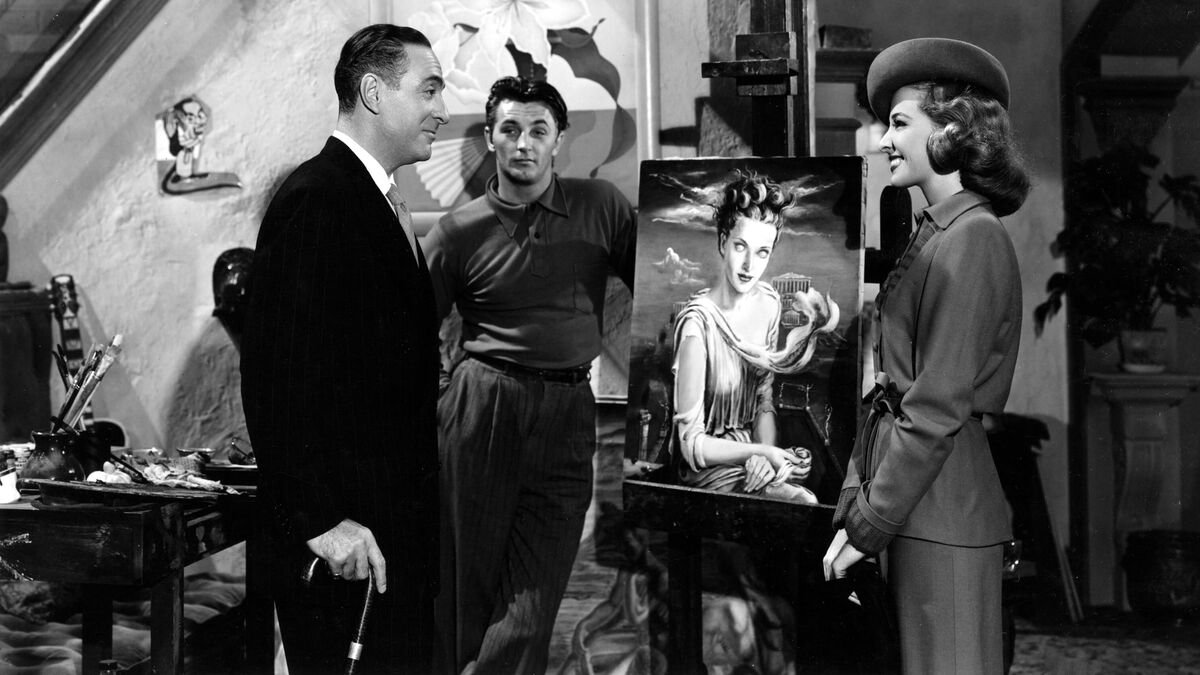In 2021, I watched 508 movies. This is not healthy or wise behavior, but this was not a healthy or wise year. In order to extract at least some value out of those 1000ish hours, I’m going to write about it.
For the first time in my life, movies from my home country accounted for less than 40% of my overall movies watched.
However, since I watched way too many goddamn movies, they still added up to 201 films watched.
In addition to a predictably steady stream of noir, I also made a real effort to explore Westerns this year, a genre that’s a relative blindspot for me. I also saw the usual array of comedies, dramas, and big dumb action movies, though 2021 was a rough year for my relationship to superhero cinema; I saw five American superhero movies, loved none of them, and hated two.
With the US accounting for far more movies than any other single country, and having learned from making the South Korean article entirely too long, I’ve split this one in two. This is part one, focusing on the actors, actresses, and directors I watched the most in 2021. Part two will cover the best and worst of the movies themselves.
Most Watched Actors
6 Movies: Lee J. Cobb
Johnny O’Clock; Thieves’ Highway; The Left Hand of God; The Garment Jungle; The Trap; They Came to Rob Las Vegas
Whether you prefer your authority figures full of imperious bluster (They Came to Rob Las Vegas, The Garment Jungle), slimey double-talk (Johnny O’Clock, Thieves’ Highway), smug contempt (The Trap) or affable villainy masking a sentimental streak (The Left Hand of God), Lee J. Cobb is your man. His movies varied in quality, but his performances didn’t; whether he’s the clear MVP (Garment Jungle) or trading barbs with top-end stars like Widmark and Bogart (Trap and Left Hand respectively) he’s hell-bent on putting the movie on his back and taking it higher than it could go without him. He seems especially drawn to portraits of big men with small weaknesses, finding nuggets of humanity in his monsters and traces of the detestable in his heroes. Great actor, always a value add.
6 Movies: Burt Reynolds
White Lightning; Shamus; Hustle; Gator; Smokey and the Bandit; Sharky’s Machine
Underrated dramatic actor. Yes, his first and greatest asset is his megawatt charisma and charm, but when called upon, he can find tender emotional notes to play, and play them as well as anybody. White Lightning is far from a serious movie, but there’s a quiet moment at the end as Reynolds’ watches his plan play out, and it’s a scene that a lot of stars would have played as a moment of triumph rather than contemplation; Burt goes the other way, and brings some otherwise absent poignancy to the proceedings.
The sequel, Gator, is a better—if considerably more over the top—film, with Burt wielding that aforementioned charisma as his weapon of choice, fully unleashed in a big dumb action movie. Smokey and the Bandit is every bit the classic I was led to believe, a breezy charmer with Burt’s winking enthusiasm powering a simple story into the all-time classics pantheon. Some of his others aren’t as good—Shamus is a pretty by-the-numbers detective yarn lacking another memorable performance in the cast, while Sharky’s Machine can’t quite marry its noir aspirations to its big dumb 80s aesthetic—but then there’s Hustle, an unsung classic of 70s pulp and ennui.
Easily Reynold’s biggest acting swing of the batch, he plays an increasingly disenchanted cop cohabitating with a call girl (Catherine Deneuve, classing up the joint), with both of them mildly disapproving of the other’s lifestyle even as their own eats away them. Hustle is less interested in what Burt’s cop does than how he feels about it, and Burt makes sure that how he feels about it is more compelling than whatever all those other cops in other movies are doing with their big guns and small hearts.
10 Movies: Robert Mitchum
The Locket; His Kind of Woman; The Racket; Thunder Road; Cape Fear; El Dorado; The Way West; The Friends of Eddie Coyle, Farewell My Lovely; The Big Sleep
How great is Robert Mitchum? Nine of ten movies, spanning four decades, are at least good, and many of them better than that. The Big Sleep is the exception, inexplicably bad for a Chandler adaptation, especially in the company of Mitchum’s very solid Farewell My Lovely* just a few years earlier. Mitchum seems to know it’s crap, too, phoning in most of his performance except for an early scene opposite Jimmy Stewart and one or two lines near the climax.
*Though even there Mitchum’s Marlowe finishes third to Bogart’s take back in the original Big Sleep and Elliot Gould’s slacker variation in The Long Goodbye.
The rest, though… The Racket’s a star-studded noir, Thunder Road is Mitchum inventing the Burt Reynolds movie fifteen years before Burt got around to it, and The Way West… well, ok, The Way West is too long and doesn’t totally work, but it seems like the studio knew it, loading up the cast with Mitchum, Richard Widmark, and Kirk Douglas, all playing against type in one way or another, to keep it breezing right alone even when the story’s in no hurry.
As for the top of the heap, The Locket is an intricate frame narrative flashback noir with Mitchum neither hardboiled nor heavy, just a romantic soul unlucky enough to love the wrong woman. El Dorado is an A+ Western, taking the already perfect Rio Bravo and improving on it by swapping in Mitchum for Dean Martin. Cape Fear gets my vote as Mitchum’s greatest villain (with all due apologies to Night of the Hunter), a slimy creature of unhurried menace and absent empathy. The Friends of Eddie Coyle casts the aging Mitchum as a pitiable ghost of a criminal, trying to fumble his way out of yet another stint in stir.
His Kind of Woman isn’t the best of these films, but it is my sentimental favorite, tossing a bemused Mitchum into a delirious mix of intrigue, romance, and Vincent Price as a dandy Hollywood actor turned impromptu, Shakespeare quoting, pirate hunter. Price, and occasionally Jane Russell or Raymond Burr, steal the big showcase scenes, but the whole thing works as well as it does thanks to Mitchum finding the exact right balance between steel-jacketed cynicism and nonplussed heroism to even the keel.
14 Movies: Richard Widmark
Yellow Sky; Slattery’s Hurricane; Garden of Evil; The Cobweb; The Last Wagon; Run for the Sun; Warlock; The Trap; Two Rode Together; The Way West; Madigan; Death of a Gunfighter; The Moonshine War; Against All Odds
I don’t know when it happened, exactly. At some point this year, having already exhausted Widmark’s most acclaimed work (Night and The City, No Way Out, Kiss of Death, Judgment at Nuremberg etc.), but still enjoying everything I saw him in, I realized he’d become my second favorite American actor*. When I first saw him in Kiss of Death years ago, I thought he was just about the greatest heel I’d ever seen in a movie and also that he could never, ever play a hero. I was half right.
*Trailing only Humphrey Bogart.
This year I saw him in mostly heroic parts. There were three exceptions. Yellow Sky, a western adaptation of The Tempest that’s always very good but never as great as that logline makes it sound. Moonshine War, which is a bad movie with a great ending. And Against All Odds, an inexplicably misguided remake of Out of the Past in which the detective is replaced by a football player, Kirk Douglas is replaced by James Woods, and the femme fatale is no longer a villain. Widmark’s the best part of all three.
Many of his hero roles came in Westerns. The Last Wagon’s subject matter and racial politics haven’t aged gracefully, but Widmark’s a blast as a reluctant white hero raised by the Comanche to kill Apaches. He saves Garden of Evil from a Gary Cooper performance so sleepy I’m not sure Coop ever found out he was in it, and keeps The Way West reasonably afloat. Warlock, Two Rode Together, and Death of a Gunfighter all share an interest in poking holes in the romance of the Old West. Widmark’s characters in the three films almost seem to be evolutions of the same man reckoning with his place in a wild world, first as a thug who realizes the world needs him to be a hero (Warlock), then a hero realizing the world is run by thugs (Two Rode Together), and finally as a defiant old man determined to spend his last days showing those thugs all the dirt and blood staining their fancy new business suits. All three films are excellent.
As for the rest, Madigan is a starkly bitter 70s procedural built on the strength (like Warlock before it) of Widmark and Henry Fonda. The Trap is a tight little morality play of a desert noir, putting Widmark’s reluctant mob attorney in between scummy employer (Lee J. Cobb) and his uncompromising lawman father (Carl Benton Reid). The Cobweb is a gloriously overstuffed melodrama about picking out hospital drapes, of all things, that succeeds thanks to its too big to fail cast, in which Widmark plays the head psychiatrist torn between his wife (Gloria Grahame) and employee (Lauren Bacall), a problem nearly as relatable as being forced to choose between winning the lottery or winning a different, equally lucrative lottery. Run for the Sun is big fun, a two-fisted pulp jungle adventure co-starring Jane Greer and Trevor Howard (both great, though Greer’s part is underwritten), with Widmark playing Legally Not Ernest Hemingway But Come On We Know Who He Really Is.
Last but not least, Slattery’s Hurricane follows Widmark’s self-interested, drug couriering private pilot and the two women in his life—Veronica Lake and Linda Darnell—is an objectively very good/subjectively great quasi-noir that’s not quite as great, objectively or subjectively, as it ought to be given the talent in its cast (also featuring John Russell). In its defense, it’s held back by the Hays Code, with most of the drug stuff being confined to subtext and the would-be torrid affair the movie needs coming in much closer to tepid.
All in all, great year for Richard Widmark movies. Nothing quite topped my favorites of his—Night and the City, No Way Out, Judgment at Nuremeberg—but 10/12 were somewhere between quite good and stellar, and the other two at least had their moments.
Most Watched Actresses
4 Movies: Marlene Dietrich
Destry Rides Again; The Flame of New Orleans; Martin Roumagnac; A Foreign Affair
She was some kind of a woman. What does it matter what I say about her?
Fine. I suppose I should say something, given the venue, so I’ll say this: A Foreign Affair and Destry Rides Again are both near-perfect movies that lost none of their magic upon revisiting, and both are rare—for Dietrich—in that each have other players (namely Jean Arthur, Jimmy Stewart, and Brian Donlevy) who are strong enough to keep her from walking away with the entire picture in her purse… which is not to say that she’s anything less than exemplary in either. Martin Roumagnac was new to me, and is another of those pictures, with French megastar Jean Gabin ably keeping pace as capricious Dietrich’s besotted but fatally jealous suitor. The Flame Of New Orleans was also new to me, but was not another of those pictures; it’s worth seeing, but Dietrich is the first, second, third, and last reason why. That is still enough to weakly recommend it, but not nearly with the enthusiasm of the other three pictures mentioned.
4 Movies: Linda Fiorentino
After Hours; The Last Seduction; The Desperate Trail; Jade
In a better world, Fiorentino would still be playing new variations of icy, dangerous women twice a year in major motion pictures. In this one, we’ll just have to make do with her excellent 90s output. She’s a standout supporting player as an ambivalently friendly, but cooly risqué, dominatrix in Scorcese’s After Hours, and pretty much the only part of William Friedkin’s fever-dream Jade that really works, as the lead’s perilously wintry object of desire. She (and Sam Elliot) take The Desperate Trail far beyond where its made-for-TV budget would otherwise place it. In it, she plays another deadly arctic woman… but this time also a cowgirl. Most famously, she’s the centerpiece of The Last Seduction, which is so unimpeachably great I’m going to write it about it more later (it’s also her peak frost fatale performance).
This paragraph is slightly unfair, typecasting Fiorentino as a woman of low temperature and high lethality. Movies I didn’t watch this year proved she could also play deadpan, snarky heroines just as well (Dogma, Men in Black).
4 Movies: Jane Russell
The Paleface; His Kind of Woman; The Last Vegas Story; Johnny Reno
Jane Russell deserved better scripts. The Paleface is a racist mess that she nonetheless turns temporarily into a great time whenever the movie shuts Bob Hope up long enough to let her. Johnny Reno is another flawed Western, this time wasting an electric Russell and a tragically pitiable Lon Chaney Jr. supporting performance with a lackluster script and dull-as-dishwasher leading man turn from the normally-better-than-this Dana Andrews. Similarly, The Las Vegas Story is one of a seemingly endless series of mostly good noirs hobbled by a listless Victor Mature performance as the lead. Russell is again sensational, and again has a sensational co-star in Vincent Price, but Mature’s pervasive mediocrity puts the usual B+ ceiling on the proceedings.
Fortunately, she and Price also got to make His Kind of Woman with Mitchum, which is an absolute blast, though even there poor Jane gets sidelined for the best chunk of the movie after carrying the slower bits on her back.
4 Movies: Veronica Lake
I Married a Witch; Ramrod; The Sainted Sisters; Slattery’s Hurricane
Veronica Lake is so great. She makes something out of nothing in the mostly underbaked comedy The Sainted Sisters as a conwoman trapped in a shitty small town, and she salvages the part of a drug addict that the censors won’t let be a drug addict in Slattery’s Hurricane. In Ramrod she has tremendous fun strutting about as the gatekeep gaslight girlboss of the Old West, manipulating Joel McCrea, among others, into fighting her wars for her. She’s the titular witch in I Married a Witch, wreaking adorable marital mayhem upon the hapless descendent of the man who once burned her at the stake. The movie as a whole is cute, campy, and quirky, which are diminutive adjectives that may lead a reader to wrongly assume it wasn’t also one of the funniest, most charming films I watched all year.
5 Movies: Michelle Pfeiffer
Tequila Sunrise; Into the Night; Dangerous Liaisons; The Fabulous Baker Boys; The Russia House
In reviewing The Fabulous Baker Boys, Roger Ebert said of Pfeiffer’s big musical number, “Whatever she's doing while she performs that song isn't merely singing; it's whatever Rita Hayworth did in Gilda and Marilyn Monroe did in Some Like It Hot, and I didn't want her to stop.”
That’s about the highest praise you can give an actress*, and the sort of hyperbole that annoys me 99.999% of the time. But when you say it about Michelle Pfeiffer, you are no longer speaking in hyperbole. She is as transcendent in The Fabulous Baker Boys as the Ebert blurb portends, and she is no less fantastic in Dangerous Liaisons, The Russia House, Into the Night, or Tequila Sunrise, though none of the parts are remotely alike. Streetwalking songbird, chaste French nobility, reluctant Russian revolutionary, manic pixie jewel thief, and sharp tongued restaurateur.
That’s what we used to call range, back when people had it.
Into the Night is a bad but intermittently entertaining movie following two leads, one likable (a sleep-deprived Jeff Goldblum) and one lovable (Pfeiffer, kinetic) through a long, stupid evening in Los Angeles highlighted by too-rare confrontations with David Bowie’s politely apologetic assassin. She’s every bit a match for Sean Connery—the motivated, captivating, oh-I-guess-he-likes-the-script-this-time version—in The Russia House, a patiently erudite “thriller” more interested in emotion than espionage. Tequila Sunrise doesn’t give her as much to do as it ought to, casting her as a woman caught between Schrodinger’s reformed drug dealer (Mel Gibson, giving his stock performance) and his estranged cop best friend (Kurt Russell, greasy yet noble), and the script especially puts her in an unwinnable position in the romantic climax. Even so, she—and Russell—make it feel like it’s better than it is.
All that is to say, whatever it was she was doing in those movies, I didn’t want her to stop.
*Those who know me likely know that Gilda is one of my all-time favorite movies.
5 Movies: Linda Darnell
Mask of Zorro; Hangover Square; My Darling Clementine; Blood and Sand; Slattery’s Hurricane
Speaking of range… Ladies and gentlemen, introducing Linda Darnell! The amoral sequined parasite in Hangover Square couldn’t be any further from the desperately devoted, long suffering lover of Tyrone Power’s bullfighter in Blood and Sand, but both are grand, operatic pictures (and both featuring apex Laird Cregar performances, as well) well-worth your time.
The Mark of Zorro is as good as American swashbuckler movies get, and while Darnell is confined to the token girlfriend part, she makes a meal of it (and her chemistry with Tyrone Power, as in Blood and Sand, is magnetic). Slattery’s Hurricane is another strong picture we’ve already touched on twice, but Darnell has the hardest job in it, playing the conflicted adulteress alluring enough to believably drive a man to cheat on Veronica Lake, yet sympathetic enough we don’t hate her for it.
Her tallest order is dragging Victor Mature’s charmless carcass of a Doc Holiday portrayal through My Darling Clementine. She can’t wholly save the movie from him, but she does save her scenes, and that’s no mean feat.
My favorite kind of Darnell performance isn’t one I got to see this year, but it’s my article so we’re talking about it anyway. While most femme fatales in classic noir are alluring and glamorous, Darnell’s are meaner, jagged, all teeth and sneers. Her characters in No Way Out and Fallen Angel aren’t sculpted out of ice or marble, but melted down ashtrays… and yet, both still nurse an ember of human warmth buried beneath the nicotine and arsenic, in a way that feels like they’re only so hard on the outside because they know even letting so much as a single gentle breath through into the hearth might extinguish that precious heat forever.
That she can so effortlessly pivot from those cinder-coated sharps to the pure-hearted madonnas of Zorro or Blood and Sand is a talent rare enough to make her one of my favorite actresses.
8 Movies: Kathleen Turner
Body Heat; Romancing the Stone; Crimes of Passion; Prizzi’s Honor; Jewel of the Nile; Peggy Sue Got Married; War of the Roses; V.I. Warshawski
When you watch a Kathleen Turner movie, you can safely assume two things: that her scenes will be no worse than good, and that her character will feel at least as real and lived in as anyone else in the movie, and usually moreso.
If she’s the lead, you start from a position of strength, knowing the movie will be decent. Whether it is more than that depends upon her co-workers. Sometimes they let her down.
V.I. Warshawski, Jewel of the Nile, Prizzi’s Honor, and Peggy Sue Got Married are all good—the latter two perhaps even great—films in which Turner is betrayed by her collaborators. In Warshawski, her medium-boiled P.I. has too little support from anyone else in the cast (though Charles Durning is fun as an annoyed but concerned police contact), while the script gives her the P.I. patter she needs, but doesn’t give her the story. In Jewel of the Nile, everything that made Romancing the Stone so exceptional is back, but in shorter supply, and with a lot of other shit we didn’t want or need thrown in* to pad the runtime. Prizzi’s and Peggy couldn’t have more different subject matter, but are both made by all time great directors (John Huston and Francis Ford Coppola), featuring Oscar-caliber Turner performances (she was nominated for Peggy and should have been for Prizzi), hurt by delusionally over the top and off-key performances from their leading men.
*In this case, losing original writer Diane Thomas left shoes too big for her replacements to fill. I’ve seen several other movies by both Jewel of the Nile writers, and I feel confident saying it was unfair to ask them to write something as good as Romancing the Stone in any movie, let alone in its direct sequel.
Nic Cage in about one rung lower on his personal insanity ladder in Peggy Sue Got Married than in Vampire’s Kiss, but given that the rest of the film is a thoughtful—though funny—character study about a woman who finds herself returned to her teenage past in the face of an uninspiring adult present, that’s still about eleven rungs too high. Meanwhile, in Prizzi’s Honor, Turner and Jack Nicholson play a pair of mob assassins who fall in love but end up at cross purposes when one is assigned to kill the other, and man, that already sounds great, doesn’t it? Toss in a career highlight turn from Anjelica Huston as Jack’s mafia princess ex and the pedigree of her father in the director’s chair, it really should be a can’t miss prospect. Turner’s predictably great, too. Unfortunately, the sum total of Jack’s alleged performance is saying “wop” every other word and doing an Italian accent so badly stereotyped it makes the Mario Brothers look like they’re doing Scorcese. Inexplicably, especially in a film where Turner torches him in every one of their scenes together, this was enough to net Jack an Oscar nomination in 1985.
Fortunately, there are also times when her co-workers are up to the job. Crimes of Passion is neon filth with a brain, starring Turner as a self-possessed prostitute pursued by Anthony Perkins’ deranged preacher. For a movie as unapologetically sleazy as it is, Crimes does right by Turner’s China Blue, who is not a victim, and not ashamed, despite the considerable efforts on Perkins’ part to make her both.
Romancing the Stone and War of the Roses team Turner with Michael Douglas and Danny DeVito, both excellent in both. While Romancing is cynical for what is ultimately a pulp adventure romance (when it’s not busy being a parody of the same), it can’t hold a cynicism candle to the arsenic-bitter heart of War of the Roses, a comedy so bleak that the closest thing it has to a hero is the divorce attorney… and so goddamn funny and mean you’ll laugh anyway.
Then there’s Body Heat, Turner’s breakthrough. Written and directed by Lawrence Kasdan, co-starring William Hurt, and featuring strong supporting turns from talents as disparate as Mickey Rourke and Ted Danson, it’s about as good as movies get. As incandescent as Turner’s performance is, the rest of the movie is so perfectly executed that you can’t say it wouldn’t work with anybody but Turner in it; there’s about a ten percent chance Lauren Bacall or Rita Hayworth could have done it, too. That’s pretty much the list.
Given that those are two of my all-time favorite actresses, and that I’m not sure Hayworth could have done Romancing the Stone or Bacall could bring home Crimes of Passion, that should give you a pretty clear idea of just what class of actress I think Kathleen Turner is.
Other standouts Actors & Actresses worth mentioning:
Humphrey Bogart, Marie Windsor, Tyrone Power, Anjelica Huston, Jeff Bridges, Geneviève Bujold, Gene Hackman, Laird Cregar, Angie Dickinson, Paul Newman
Most Watched Directors
3 Movies: Henry Hathaway
Niagara; Garden of Evil, True Grit
Marilyn Monroe making the case for Technicolor noir in Hathaway’s Niagra.
Hathaway loves stories of fundamentally good, wholesome people put up against monstrous cynicism and horrifying monsters. All three of these pictures play in that sandbox. Niagara’s technicolor noir sings when it’s about Marilyn Monroe and Joseph Cotten’s broken marriage, but flounders whenever it wanders back to the square Americana couple it’s nominally about. True Grit is a beloved classic, so I can’t say it’s bad, per se, so I will instead say that the aw shucks pollyanna teenager it's about is so grating I was rooting for the rattlesnake. Garden of Evil has everything except the hero, with a great story, tight suspense, and sizzling turns from Widmark and Susan Hayward as they undertake the herculean task of carting the disinterested corpse of Gary Cooper through the movie Weekend at Bernie’s style.
3 Movies: Don Siegel
The Killers; Madigan; Death of a Gunfighter
Clu Gulager and Lee Marvin are the bad guys in The Killers. And the good guys, to the extent there really are any.
Siegel hated Death of a Gunfighter enough he took his name off it—it’s an Alan Smithee film—but I thought it ruled, and it fits nicely beside the other two Siegel pictures I saw this year, with all three looking into the death of a man’s idealism. The Killers sees it from outside, as Lee Marvin and Clu Gulager puzzle over the weary acceptance with which their target met his fate. Madigan stars two cops (Widmark and Henry Fonda) who each believe themselves to be the true, good kind of cop that makes a difference. Siegel has them holding an unflattering mirror up to one another, and to the very idea that there even is such a thing as a truly good cop. Death of a Gunfighter trades the ego of The Killers and superego of Madigan for pure id, with Widmark playing a man who knows he cannot change, knows he will die because of it, and just can’t help living by a code the modern world he helped build has no use for.
3 Movies: Christopher Landon
Happy Death Day, Happy Death Day 2U, Freaky
Jessica Rothe is just dying to stop dying in Happy Death Day.
Happy Death Day was one of my happiest surprises of the year, a self-aware time-loop horror flick that’s also funnier than most comedies; Scream by way of Groundhog Day. The sequel is about 80% as good—still plenty enough to recommend it—while Freaky tries to apply that same unstable mix of horror and humor to a different set of tropes with a body-switch slasher film… but sadly isn’t in the same league as the HDD films. Still, those HDD flicks are so much fun, and Freaky enough of a big swing, that I’m eager to see what he tries next.
3 Movies: John Farrow
Calcutta; Alias Nick Beal; His Kind of Woman
Sure, on the one hand, Vincent Price may be a privileged actor with no combat experience or training. But on the other hand, he’s pretty sure he can take those pirates.
I think what sets Farrow apart from a lot of directors from his era is a willingness to take the classic noir template and then get real weird with it. Alias Nick Beal? Classic noir tale of temptation, except the bad guy is the literal devil in a three piece suit. Calcutta? Classic noir McGuffin picture… set in India, where all the smartest characters are outside of the usal Hollywood type; big women and foreign men. His Kind of Woman is a typical stranger-in-a-strange-land noir… plus or minus face-swapping, creepy German scientists, pirate-hunting actors, and so on*. His other noirs I’ve seen are similarly daring—one of them kills off a marquee star ten minutes in, another throws its main villain down an elevator shaft. Not every Farrow noir is a masterpiece, but they’ve all got something interesting going on.
*Though in that case he was replaced with Richard Fleischer by even weirder producer Howard Hughes, who wanted more of the pirate-hunting actor, so who’s to say who introduced how much of the weirdness when.
3 Movies: Brian De Palma
Blow Out; Body Double; Femme Fatale
This is maybe the eighth weirdest scene in Body Double.
I love this weird horny genius. He makes movies like Hitchcock after two lines of blow, a quart of absinthe, and a fistful of grey-market East Asian boner pills. I loved all three of these movies, each of which felt obsessed with artifice, perception, and deception in its own way. Blow Out focuses on the voyeurism of sound, and turns it against our so-called hero. Body Double fixates instead on vision, on what you can see and what it means and what it actually is and how little those three things generally have in common. Femme Fatale leaves the physical senses behind and instead plays with belief and identity, and how one can lie to the other until it’s telling the truth. Am I being deliberately obtuse and obscuring details of the plots, and their various weird and memorable excesses? Yes. Should you see them anyway? Only if you like taught, dreamy yet cerebral thrillers that nonetheless always seem to have one hand down their pants.
3 Movies: Edward Dmytryk
The Left Hand of God; Warlock; Shalako
Bardot reacts to learning that in a movie where every white character but one is supposed to be European, Sean Connery will be playing the American cowboy.
I watched a lot of Westerns this year, including a fair share by legends of the genre like John Ford and Howard Hawks. Warlock, by Edward Dmytryk, was the best of them. Shalako was not as good as Warlock but was nearly as interesting and cleanly more fun. The Left Hand of God was not a Western, only because it was set in the East, but in all other ways may as well have been, except that the hats had points instead of dips, and the racial tension was between the white and Chinese, rather than the white and the Apache or Comanche.
Speaking of race, there are elements of these films that have aged extremely poorly, as films of this era often do on that front (one example: the casting of the white Lee J. Cobb as Chinese). But these films were progressive for their era, and are more thoughtful on the subject of race than many of their peers—Shalako especially has a lot on its mind. While it does fall into the trap of depicting some of its Apache as noble savages, it does so mostly as a point of comparison to the detestably savage nobility of the Europeans—a group the film ultimately takes a much harsher view of*.
*None of this should be construed as justifying the problematic elements of these films, only to suggest Dmytryk may have been trying a bit harder than most of his peers when it came to seeing in color.
There are other commonalities, both superficial—each film stars one of my three favorite English language actors in Humphrey Bogart, Sean Connery, and Richard Widmark—and profound. All three feature a coward who discovers that there is a point at which he finds within himself not so much bravery as something that demands he imitate it—and in two of them, that coward’s the hero of the picture. All three films, too, feature a seemingly insurmountable foe undone not by the pull of a trigger or even the cleverness of the hero, but their own better nature and buried empathy; it’s not only the heroes in a Dmytryk film that are capable of finding more in themselves than they thought was there. All three, too, end with a woman watching a man they love, or loved, ride away on a horse, though the context varies. In one film, she knows she will never see the man again. In another, she just may. In the third, she lacks the patience to find out and takes off after him. Each is a perfect grace not to its film, and yet none is a spoiler, for these movies are Westerns, which almost always end on a man riding away. The question isn’t whether a man rides off into the sunset, but what kind of a man he is when he does, whether he does so of his own volition… and why he rides at all.
Edward Dmytryk is uniquely gifted at finding satisfying answers to those questions.
3 Movies: Billy Wilder
A Foreign Affair; Sabrina; The Apartment
Would you like to buy some illusions?
Billy Wilder is on the short list for “Greatest Director of All Time.” He could do a lot of genres well, but this year everything I watched from him was a romantic comedy. Since Billy was such a light-hearted type, two of those romantic comedies involve one of their lovers attempting suicide and the third involves Nazi Germany. Wilder knows that the only stakes higher than life or death are love or lose, but he also knows there’s no rule saying you can’t have both.
Being one of the greatest directors to ever live has certain perks, too. Namely, that it tends to attract the greatest actors who’ve ever lived. Across just those three films, Wilder has as his leads Bogart, Dietrich, Audrey Hepburn, Shirley Maclaine, Jack Lemmon, Fred MacMurray, William Holden, Jean Arthur, and, er, John Lund, just in case you were starting to worry he was carried by his cast members. He uses them all to their best purposes, and in the cases of those whose legends were already living—Bogart, Dietrich, MacMurrary, Arthur—he finds ways to tweak and toy with their established personae, finding new notes in old songs.
He uses his comedies, and his casts, to go to the darkest corners of the human heart (or, in Foreign Affair, human history). He confronts his heroes with death and darkness and, perhaps more than anything, doubt. He knows there’s little more relatable than fixating on your own failures and shortcomings and how little you deserve love. He also knows there’s little more dramatic or cathartic than the moment when you decide you do.
He’s not interested in much, really. Love and death and what it means to be alive, is all.
All three films are fantastically funny too, of course. When you’re one of the greatest directors of all time, you don’t have to choose between laughter and the meaning of life, they’re just two more tools on the belt.
4 Movies: John Brahm
The Lodger; Hangover Square; The Locket; Singapore
Ominous, vaguely gothic menace looms in The Locket. And Hangover Square. And The Lodger. Not so much in Singapore.
When Brahm goes gothic noir, it’s grand. When he doesn’t, it’s Singapore.
The Lodger and Hangover Square are both moody, gothic, psychologically focused noirs starring Laird Cregar. Hangover Square is a bit better on account of a sharper script and also starring Linda Darnell, but both are well worth watching. The Locket’s even better, a twisty anachronic noir with Laraine Day as a sympathetic but dangerous young woman who leaves a trail of broken men in her wake, by accident or design or Freudian trauma.
Singapore, on the other hand, is one of the lesser iterations of the “hey let’s try and do Casablanca without really understanding Casablanca” noirs that were everywhere in the 1940s. Singapore is more annoying than most, as it squanders leads that would be theoretically up to the job in Ava Gardner and Fred MacMurray. The plot is messy yet dull, and the whole thing ends up mildly watchable when its really ought to be exceptional.
From this sample size, my takeaway is that Brahm is an excellent director when he’s working off a moody, psychologically dense script, but not the sort of miracle worker that can inject life into a lazy facsimile of something that worked for someone else. No shame in that.
That’s all for Part 1. Check back in a couple of days for the best and worst American movies.

